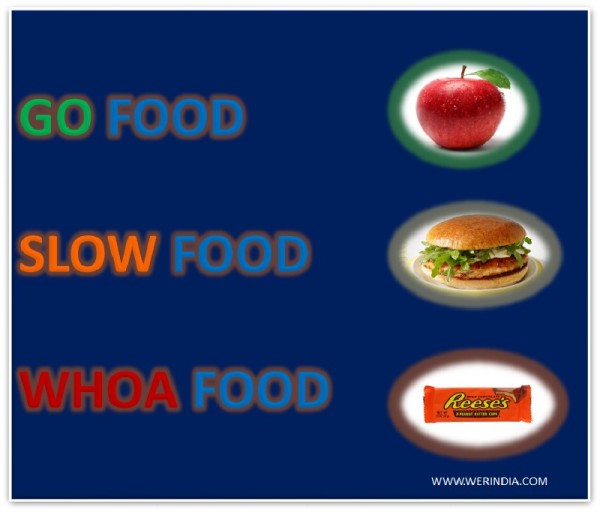
GO SLOW WHOA FOODS
Making healthy changes and adopting to healthy eating habits at young age will help children to be fit as they grow. Parents and teachers can help children in selecting food, encourage them to be physically active and in healthy lifestyle choices. These selections will help Kids to have a stronger immune system and will be ready to fight any diseases.
Now a day’s kids are smart and want to keep fit and healthy. However, it is very confusing when it comes to selection of food.
Kids might not understand nutritional aspect of food that they eat. They need guidance. To be help kids teach them the difference between GO, SLOW, WHOA foods.
NIH has designed this concept based on the nutritional value and to make sure every kid gets sufficient nutrients from the food they eat.
The purpose of this concept is to introduce healthy food choices, balance and moderation in kid’s food. Kids cannot control their food unless we step in and guide them.
In this educational tool, Foods are divided into three groups: GO FOODS, SLOW FOODS AND WHOA FOODS.
- A GO Food is very healthy for kids and can be eaten every day. It has essential nutrients that are required by the body to grow and good for kids. Example: Apple, carrots. GO foods contain very little or smallest amount of unhealthy fats and sugars
- A SLOW Food is in between GO and WHOA. It’s a food that is good to eat may be even every day. However, SLOW foods should be taken in smaller quantities. Example: Bagel and cream cheese.
- WHOA food is a food that is not healthy at all. It can be a special treat, eaten occasionally. For example, candy bar or birthday cake. Anything that contains heavy fat, oil is not good for the body.
You may also want to talk about how foods are prepared and how that can impact whether a food is GO, SLOW, or WHOA.
- For example, oatmeal with no sugar added is a GO food. But if you make the oatmeal with 2% milk, it becomes a SLOW food.
- A peanut butter and jelly sandwich on white bread is a WHOA food, but if you use whole-grain bread, sugar free jelly and low-fat peanut butter, it becomes a SLOW food.
- Corn without butter is a GO food, but add butter and it becomes a SLOW food.
Parents must be able to explain young children the concept of food, calorie and energy balance. Here are some of the nutritional concepts that are key for kids to understand and parents can help them in the process.
- Healthy diet: All foods that we eat should be formulated to be healthy diet and should contain both GO and SLOW foods. WHOA foods in least amount or none.
- Eating large quantities of foods, even GO foods can be unhealthy. Moderation is essential when we eat – this should be taught to children while differentiating the three-food category.
- Example of GO Foods: fresh, raw fruits, fresh and raw vegetables, whole wheat bread, corn tortillas, black beans, low fat yogurt, brown rice, quinoa, skim milk products, oatmeal, tofu and baked items
- SLOW Foods: graham crackers, juice, bagel, pretzels, white rice, white bread, waffles, pancakes, peanuts, jelly, ketchup, veggie burger
- WHOA Foods: Milkshakes, fried rice, French fries, fast foods, fried snacks, candy bar, pies, cookies, whole milk products, sour cream, ice cream, canned fruits, biscuits, doughnuts, muffins, hot dogs, energy drinks, syrup, mayonnaise, sports drinks
- Another important aspect to teach kids is – energy balance. This concept depends on their food consumption and physical activity level. To move, to be active, to grow, to read, one needs food. Food contains energy and measured in the form of calorie. Body uses calories to grow and move.
- Different foods have different amounts of calories. Apple mediums size supplies 60 calories and it is a GO food. GO foods have less sugar and less fat and thus supplies less calorie. More and excessive calorie intake and less activity leads to obesity and excessive weight gain.
- When we exercise body uses the calories from the food that we eat. Everyday exercise helps to burn the calorie and builds good muscle. Energy balances during this process.
For more information: https://www.nhlbi.nih.gov/health/educational/wecan/downloads/gswflashcards.pdf (Image credit: https://www.nhlbi.nih.gov -Public Domain image)
Author: Sumana Rao | Posted on: May 5, 2021
« Tips to keep child safe around pets How To Help Kids to Get Ready In the Morning »






















Write a comment